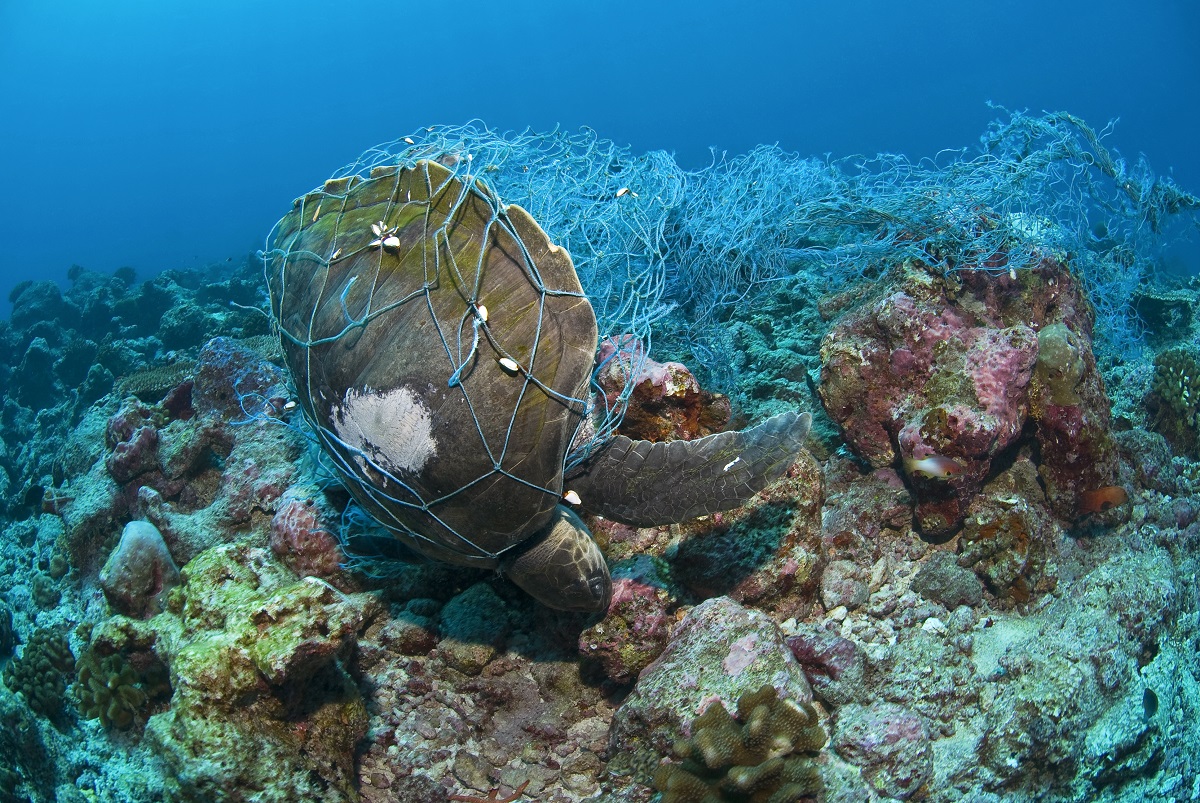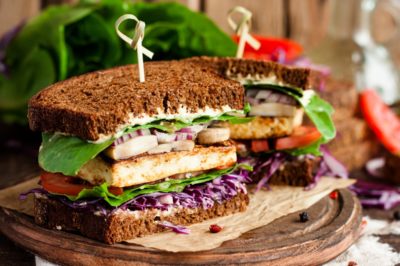Seaspiracy offers a deep dive into the dark world of commercial fishing.

Once regarded as indestructible and infinitely fruitful, the oceans are increasingly vulnerable because of human activity. All too often, commercial fishing is left out of discussions about ocean pollution, species extinction, and animal welfare. Seaspiracy aims to turn the tide on the widespread secrecy and corruption of industrial fishing and the damage it causes.
Here, we share some key takeaways from the film.
1. Fishing doesn’t just harm fish
Does fishing conjure up a mental image of a lone boat headed by a kindly captain? This is the story sold to consumers, but it couldn’t be further from the truth. Up to 3 trillion fish are caught for food each year, which equates to 5 million killed every minute. This means commercial fishing slaughters more animals than any industry on the planet.
But there are other victims of this violence, not just the animals on our plates. Bycatch, the non-target species captured by “accident,” accounts for approximately 40% of the world’s catch. As the non-target animals are considered waste, they’re thrown back into the sea and are often dead before they hit the water.

According to Seaspiracy, eating fish isn’t just a death sentence for the animals included in our meals, it’s also responsible for the deaths of 300,000 whales and dolphins and 300,000 seabirds. Bycatch is the biggest threat to sea turtles – not plastic straws.
“Fishing is wildlife poaching on a massive scale”
Ali Tabrizi, director
2. Overfishing is killing the oceans
Oceans are the planet’s biggest carbon sink, so preserving their health is critical for human survival. Seaspiracy lands industries like shark finning and whale hunting in even murkier waters and highlights how government subsidies and lack of law enforcement leave the oceans vulnerable to overfishing.
Removing large predators from the ocean so humans can eat smaller fish disrupts the ocean’s entire ecosystem, affecting everything right down to coral reef populations and causing dead zones.

Worryingly, Seaspiracy states that less than 1% of the world’s oceans are protected from industrial fishing practices, and according to researchers, at least 30% of the oceans need to be closed to commercial fishing to stand a chance of recovery.
“Mankind is not able to live on this planet with a dead sea”
Cyrill Gutsch, Parley for the Oceans founder
3. Can fishing ever be sustainable?
Many governments and environmental organizations insist sustainable fishing is the solution, but these practices barely stand up to scrutiny. Tabrizi puts the situation in economic terms: If the oceans are in a major deficit, then surely it can’t be sustainable to keep spending resources we don’t have. His investigations highlight the dangerous conditions for fishery workers and how enforcing rules is impossible so far out at sea.
Fish farms aren’t much better, and we see esteemed Scottish salmon suffer from lice infestations, anemia, and heart attacks after living in their own waste. Even consumer-trusted labels aren’t always what they say. The food industry is abuzz with terms like “sustainably caught” and “high welfare,” which are deliberately vague enough to make shoppers feel better about eating seafood without having a real impact on animals or the environment. The conclusion? The best action you can take to sustain the oceans is not to eat the animals that live in them.
4. Plastic isn’t the biggest threat to the oceans
We’re all familiar with viral videos of turtles with plastic straws stuck in their noses and whales washed up on beaches with plastic bags in their stomachs. But the Great Pacific Garbage Patch, the largest concentrated area of ocean garbage, is mostly made up of abandoned fishing equipment. Where are the headlines about this?

Seaspiracy highlights how plastic waste from fishing is never front-page news, and plastic-focused organizations refuse to comment on the matter. As Tabrizi puts it, ditching plastic straws to save the oceans is like boycotting toothpicks to save the destruction of the Amazon rainforest. The destruction caused by fishing is never held to account, while plastic straws are scapegoated.
“Even if not a single gram of plastic entered the oceans from today onwards, we would still be ripping those ecosystems apart because the biggest problem by far is industrial fishing”
George Monbiot, author and environmentalist
5. Fish feel pain
For too long, the myth that fish don’t feel pain has persisted. This makes it easier for the industry to justify the carnage of commercial fishing. Not only can fish feel pain, but they can also experience fear, have memory skills and intelligence, and have complex social lives.
Instead of justifying seafood consumption based on ecological impact, we need to view these animals as individuals who deserve to live. We don’t question whether sea turtles and dolphins deserve to live – don’t fish deserve the same?

How can you help?
The best thing most of us can do to help our oceans – and all the species who live there – is to stop eating seafood. Try vegan for 31 days with us and we’ll send you lots of fish-free recipes, tips, and resources.











